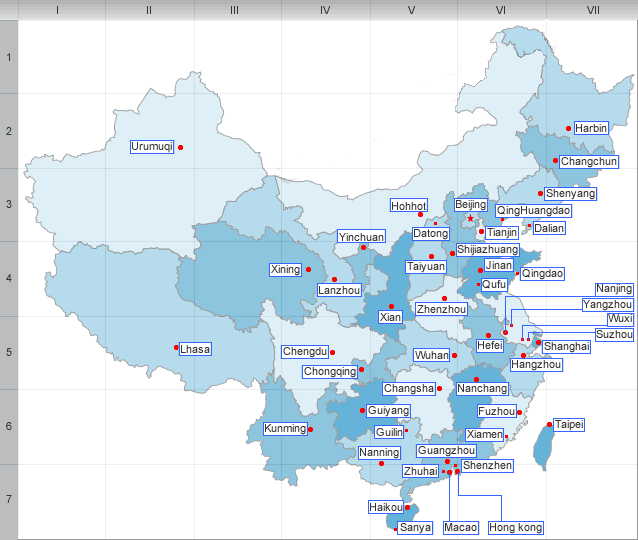Geography and climate of Shandong
Geography and climate
Shandong is mostly flat in terrain. The northwestern, western, and southwestern parts of the province are all part of the vast North China Plain. The center of the province is more mountainous, with the Taishan Mountains, Lushan Mountains, and Mengshan Mountains being the most prominent. The east of the province is the hilly Shandong Peninsula extending into the sea; it separates Bohai Sea in the northwest from the Yellow Sea to the east and south. The highest peak of Shandong is the highest peak in the Taishan area: Jade Emperor Peak, with a height of 1545 m.
The Yellow River passes through Shandong’s western areas, entering the sea along Shandong’s northern coast; in its traversal of Shandong it flows on a levee, higher than the surrounding land, and dividing western Shandong into the Hai He watershed in the north and the Huai He watershed in the south. The Grand Canal of China enters Shandong from the northwest and leaves on the southwest. Lake Weishan is the largest lake of the province. Shandong’s coastline is 3000 km long. Shandong Peninsula has a rocky coastline with cliffs, bays, and islands; the large Laizhou Bay, the southernmost of the three bays of Bohai Sea, is found to the north, between Dongying and Penglai; Jiaozhou Bay, which is much smaller, is found to the south, next to Qingdao. The Miaodao Islands extend northwards from the northern coast of the peninsula.
Shandong has a temperate climate, with moist summers and dry, cold winters. Average temperatures are -5 to 1°C(23 to 34℉) in January and 24 to 28°C (75 to 82℉)in July. Annual average precipitation is 550 to 950 mm.
| PREV:history of Shandong | Next:Ethnic group,Culture and Tourism of |



